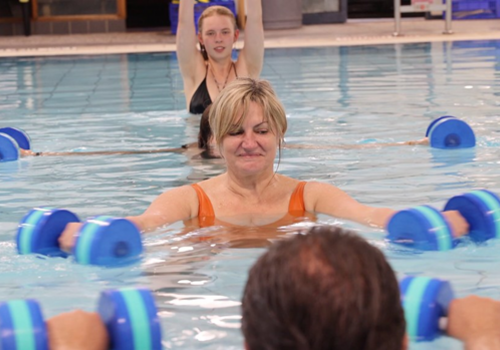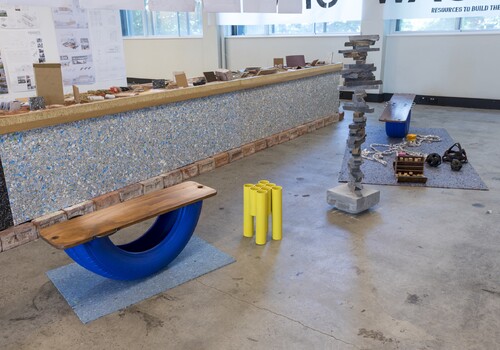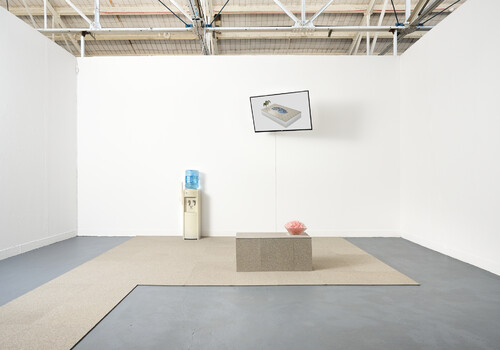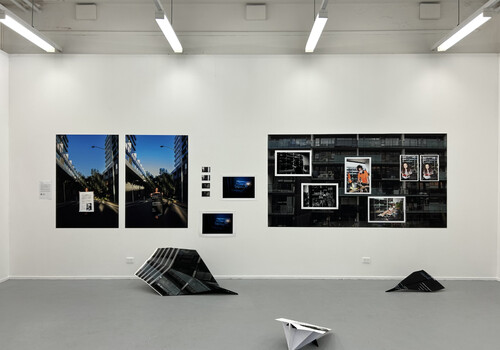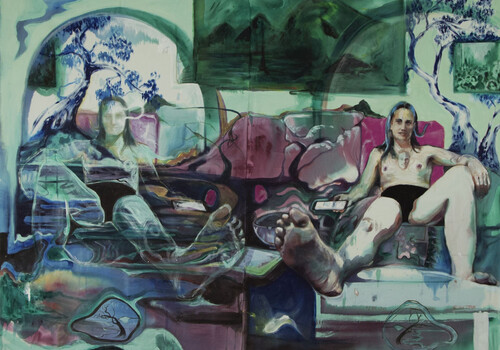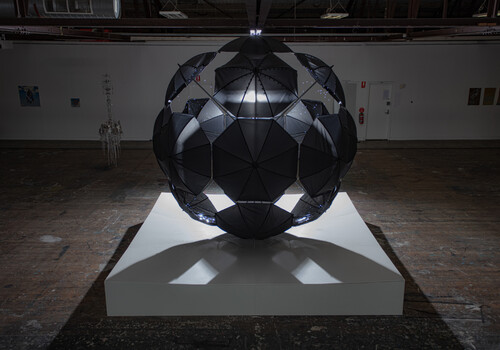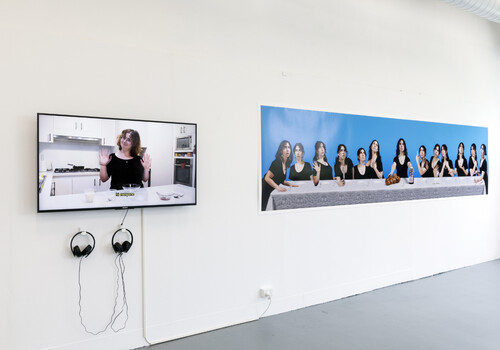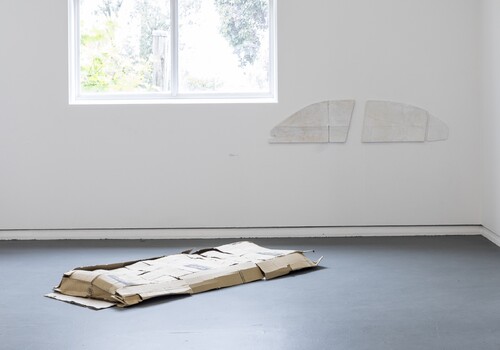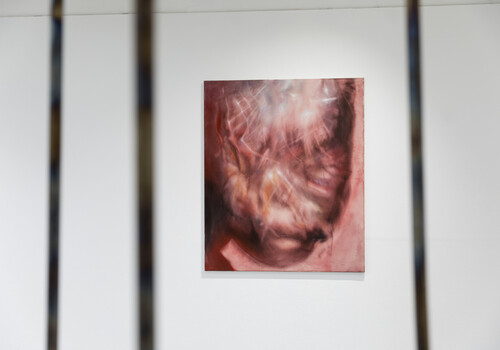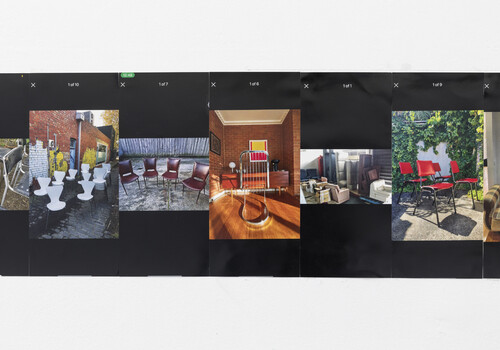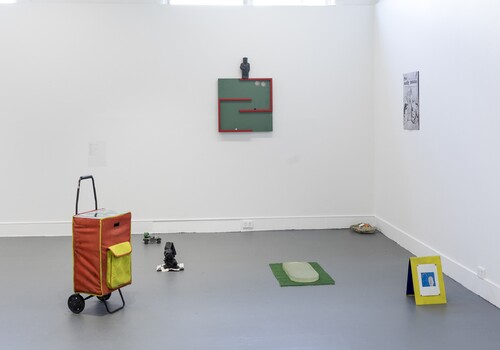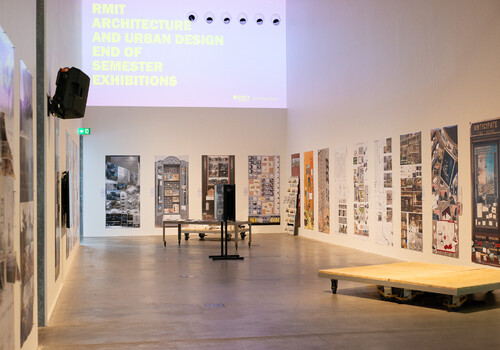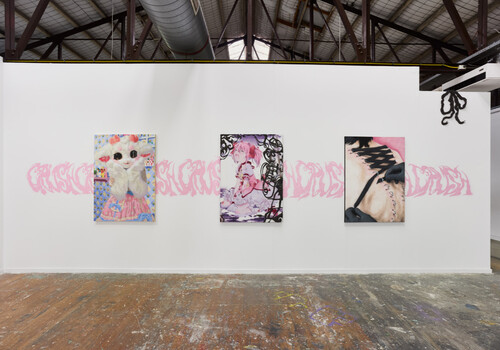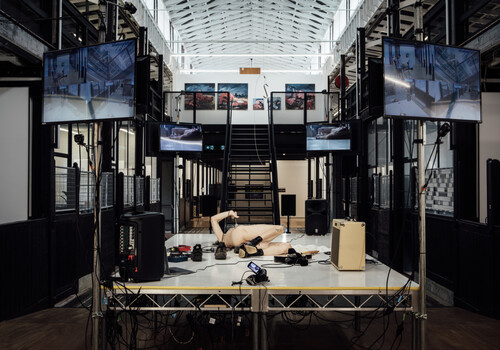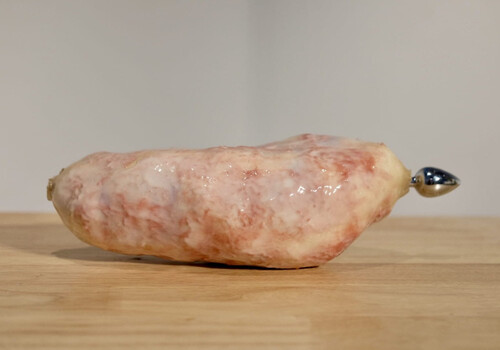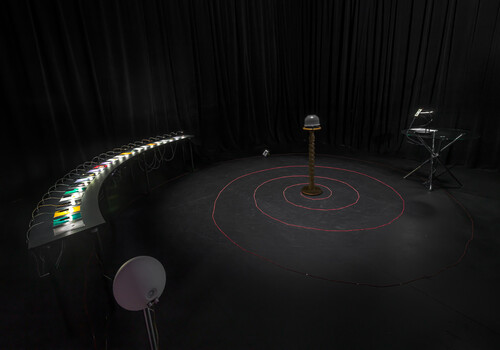Photography, RMIT
By Juliet Phraser
After weaving through the stairs of RMIT’s art school, I sensed a significant shift of perspective had been captured across all levels of this year’s photography cohort. There were fewer than the come-to-be-expected conventional portraits or showcases of studio fashion photography hung in ready-made frames that I have seen in previous years. Instead, there was a promising whisper of expanded image-making resolved in playful installations. Here, artists didn’t shy away from the existential question of art’s purpose in the ongoing cost-of-living and climate crisis. Rather they made meaning in tandem with waste, asking us through images, how do you hold moments of tenderness during decay?
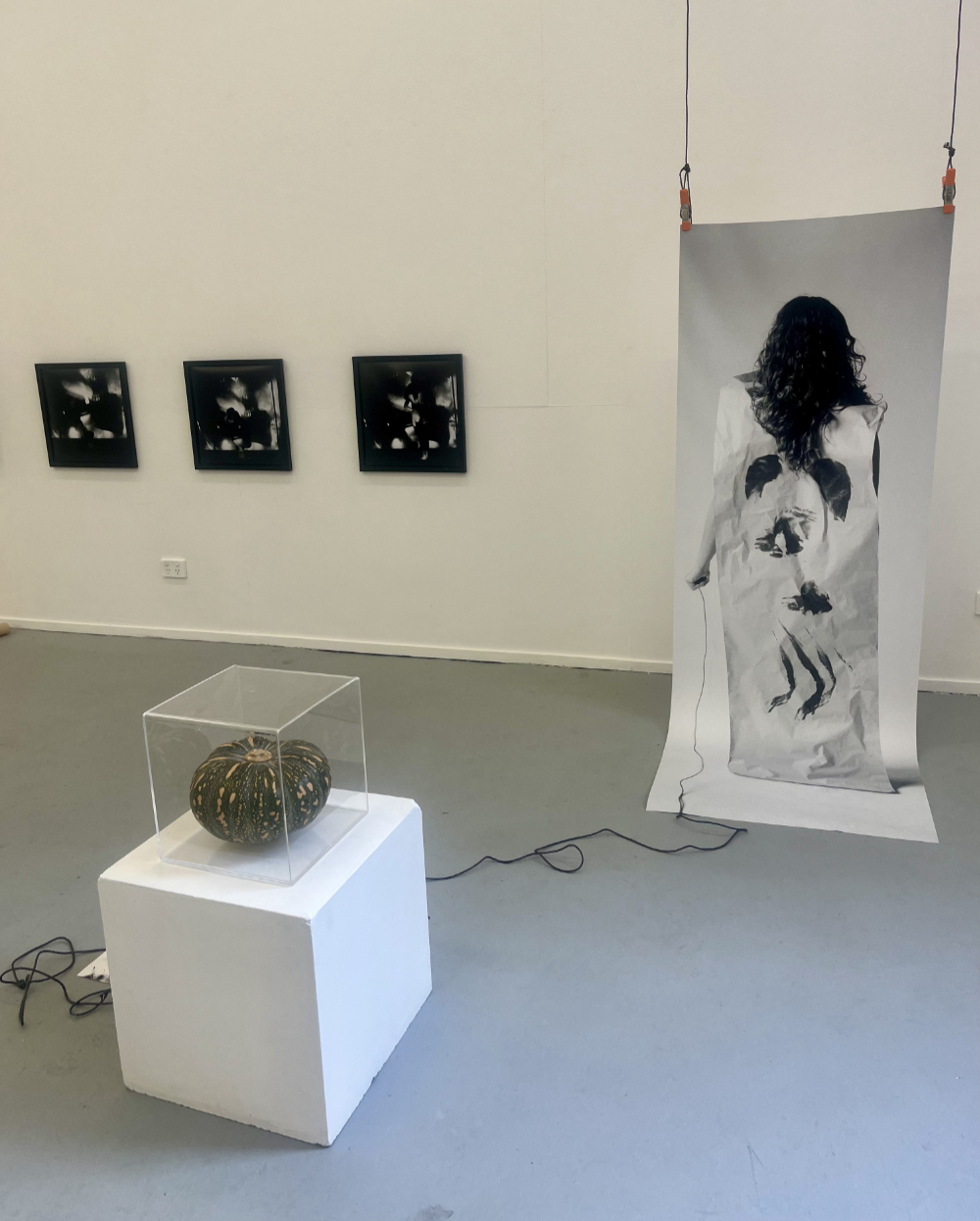
Walking into the backroom of the Bachelors, I’m immediately drawn to the low hanging work of Martina Cavanna. On top of a stout plinth is a clear perspex box encasing a whole Kent pumpkin. Taped to this is a grey cord falling across the floor from which is suspended a monochrome life-sized self-portrait of the artist holding a shutter release cable, her appearance obstructed by hair, her body draped in craft paper. The work, titled ¿QUE NACE DE UNA CALABAZA PODRIDA? (What grows from a rotten pumpkin?) (2023), teases the artist’s tactile process of carving out the pumpkin’s interior to operate as a pinhole camera. A process confirmed by the unusual tiny print nearby and her written abstract.
Cavanna calls upon viewers to reflect on our exchanges with everyday consumption and bodily bio-degradation. Like vegetables mouldering at the bottom of the fridge, she reminds us of the “mutual exchange” between all organisms. As RMIT’s remaining darkrooms have been defunct for years, the self-driven analogue outcomes of photographers like Cavanna should serve as printed proof (pun intended) that the university should finally reinstate its darkroom.
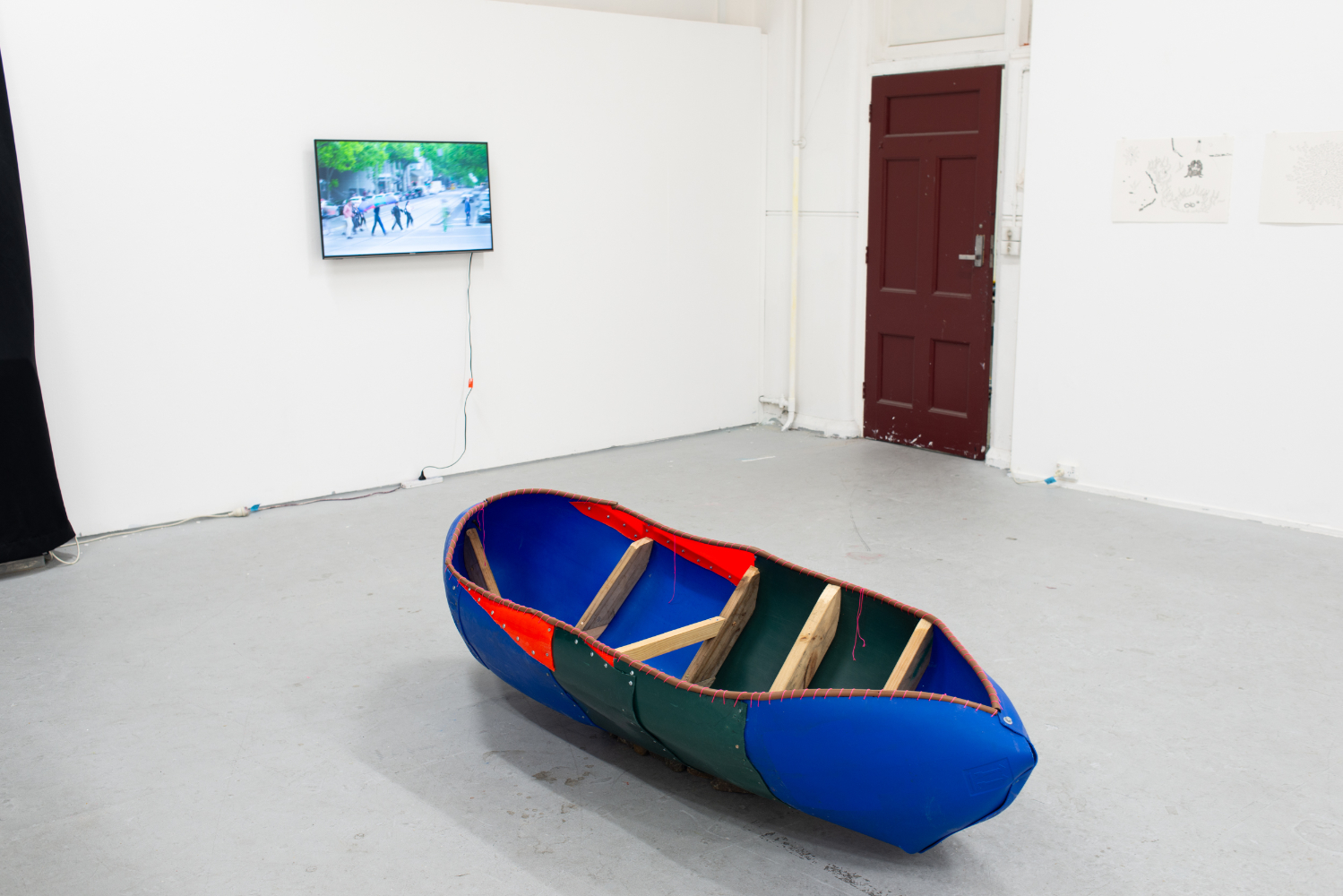
Moving between floors to the Fine Art Honours students, I find myself comforted by the soft warm lighting of Iona Julian-Walter’s installation. Here, the viewer encounters intimate ink drawings surrounded by an endearingly awkward oblong vessel (boat) titled Present Boat for a Past and Future River (2023). Julian-Walter’s considered use of salvaged materials (chemical barrels, compost bins, and surveyors string) speaks to her concern for climate change and consideration of human migration. On the opposite wall loops the video-work Portage (Williams Creek) (2023), in which Julian-Walter is documented walking down the Melbourne CBD’s Elizabeth Street with her boat upside down on her head. While her face remains obstructed, the filming style is quirky showing close-ups of her shoes, long-distance reactions from onlookers, and even a shot taken from a moving tram. In referencing “Williams Creek,” an erased body of water that once flowed down Elizabeth Street into the Yarra, Julian-Walters gestures to the ongoing colonisation of Naarm’s natural landscape.
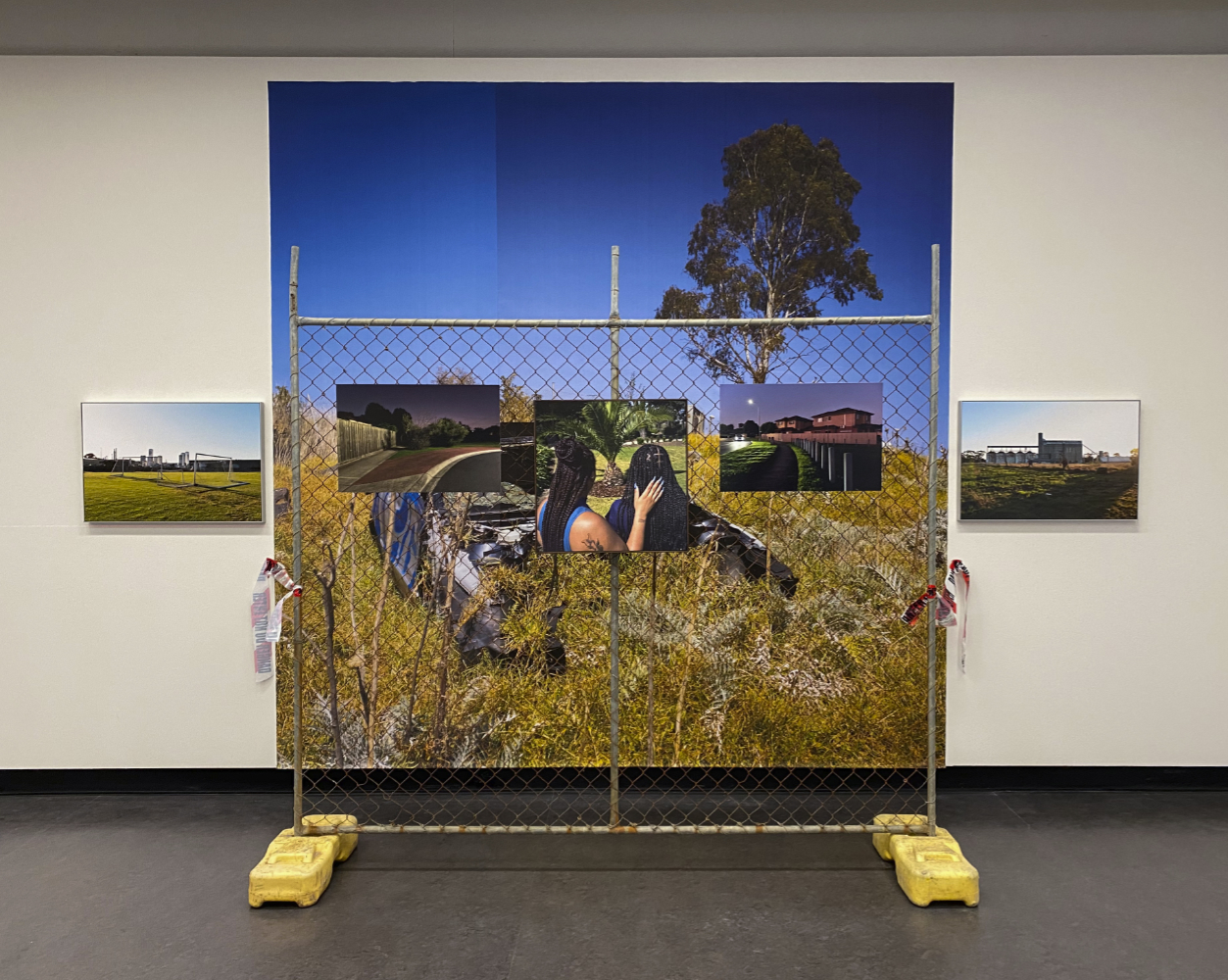
The theme of urban ecology continues as I encounter Masters graduate Anna Kiparis’s installation Regarding Scumshine (2023), a collection of six colour saturated prints hung from a rusted galvanised chain-link fence. Being from the western suburbs myself, I instantly connect with Kiparis’s appreciation for dry, abandoned lots and the anonymous intimacy between the two women at the centre of a fence in her Meet Me at The Gardens (2023). Kiparis’s surrounding landscapes of decommissioned buildings and factories pay tribute to the physical labour in the history of Melbourne’s western suburbs. Cautioning us in bright red tape not to cross, she thoughtfully engages with the stigmatised moniker of “scumshine” associated with the low-income migrant area of Sunshine, granting pride to us westies.

Hiding in the attic of the arts building is Honours graduate Rubyanna Edwards’s self-aware video-installation titled Obnoxious Instincts: Welcome to my World! (2023), a floor-based cacophony of digital drawings animated across thirteen analogue televisions. Moving between the extremes of the colour spectrum, Edward invites audiences to take a seat on a Freudian chaise longue. Lying down, I felt mesmerised by their temporal world with the comforting hums of the monitors ringing in my ears and audio by collaborative-producer Yjgk. When I spoke to Edwards, I was surprised to learn they have aphantasia—an inability to visualise images in one’s mind. As someone that experiences sensory stimuli differently myself, Edwards’s neurodiverse experience of colour connected with me. They’ve struck a balance between immersion and overstimulation that offers a poetic contemplation of what it means to live in a digitally demanding world.
In performance with the decaying world, both Cavanna and Julian-Walters playfully exchange care with their environments through the obstruction of their image. While Kiparis’s and Edwards’s vibrant landscapes embrace comfort in their internal worlds and invite audiences in on their ways of seeing. Collectively these artists have reflected a tenderness that can offer us a feeling of alleviation in what is otherwise a pretty scary world.
Juliet Phraser is an artist and writer from Naarm. She is a recent graduate of VCA Photography and Monash Fine Art Honours. Her research interests include crip theory, labour and methods of care.
